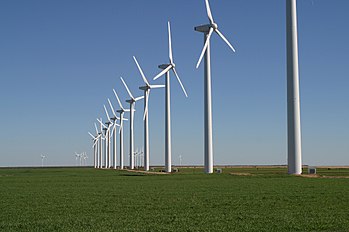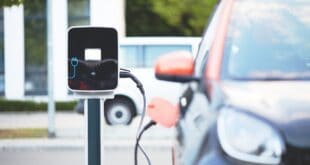Excess Wind Power Turned into Gas in Denmark Using Hydrogenics Technology

Hydrogenics Corporation (NASDAQ:HYGS; TSX:HYG), a leading developer and manufacturer of hydrogen generation and hydrogen-based power modules, today announced that it will be a participating partner of the Power-to-Gas Biological Catalysis (“BioCat”) Project in Denmark. The “BioCat” installation will use hydrogen made ??from excess wind power to convert biogas from sewage sludge into cleaner methane gas. This new Danish energy project will illustrate how future energy systems can be better integrated.
The “BioCat” project has received 27.6 million DKK (€3.7 million) in funding from the Danish research pool ForskEL. The consortium is led by Electrochaea, a developer of methanation technologies for Power-to-Gas applications, and the Danish transmission system operator for power and gas, Energinet. Other partners in the BioCat consortium include Hydrogenics, Audi, NEAS Energy, HMN Gashandal, Spildevandscenter Avedore, and Insero Business Services.
For this project, Hydrogenics will install a 1 MW water electrolysis plant in Spildevandscenter Avedøre, one of the largest wastewater treatment facilities in Denmark. The site will use surplus electricity from the grid to produce hydrogen using Hydrogenics’ electrolyzer, and the hydrogen will then be combined with carbon dioxide from raw biogas and fed into a separate bioreactor – in which microorganisms will perform a catalytic reaction to produce pipeline-grade renewable methane. The facility will be operated in different modes to demonstrate its ability to produce methane under dynamic operations, including while providing ancillary services to the electricity grid. The product gas will be injected into a nearby gas distribution system, and the by-products – oxygen and heat – will be recycled onsite in the wastewater treatment process. The biomethanation technology was developed by Electrochaea.
The 1 MW electrolyzer from Hydrogenics will contribute to electricity balancing through the services of NEAS Energy, thus ensuring optimal use of available wind power and demonstrating the full potential of electrolysis for grid management and regulation. The upgraded methane will be supplied to the local gas distribution system and traded by HMN Gashandel, a Danish energy service and gas distribution company managing gas grids, biogas upgrading plants, and grid injection facilities.
Ole Albaek Pedersen, CEO of HMN Gashandel, said, “We are pleased to be part of a project that combines hydrogen from excess wind and excess CO2 from biogas, thus offering more green gas to its consumers. We believe that the way forward will be to exploit the various systems’ strengths, including natural gas’ large existing flexibility and capacity that has already been paid for.; While the electricity grid needs to be made smart, gas is born smart.”
“We finally made ??the link between Denmark’s abundant wind energy and the production of environmentally friendly gas for the Danish people. Integrated planning is an essential piece when we have to divert energy systems and phase out coal, oil and natural gas in the long term,” says Kim Behnke, Research and Environmental Manager at Energinet.dk.
Filip Smeets, General Manager for Hydrogenics Europe, N.V., added, “We are very proud to be part of such a strong consortium that represents the full value chain of a Power-to-Gas applications. Denmark is a global leader in sustainable energy policy development, and our company is thrilled to find itself in a pivotal technology role. Our team is ready to bring a new generation of our water electrolysis technology into this leading edge biomethanation project.”
Coverage of Power-to-Gas value chain by consortium members
 Alternative Energy HQ solar power for homes, wind energy, and bio fuel issues
Alternative Energy HQ solar power for homes, wind energy, and bio fuel issues



 Creating Synthetic Natural Gas From Excess Electricity
Creating Synthetic Natural Gas From Excess Electricity





